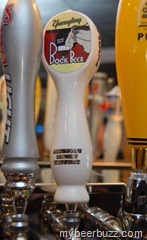- Bitterness - International Bitterness Units (IBU)
- Strength - Alcohol By Volume (ABV)
- Color - Standard Reference Method (SRM)
Of course, this is all very technical, so after taking a gulp, you wouldn't say "yep, that had a IBU of 30". IBUs, for example, are measured by using a spectraphotometer and solvent extraction. That doesn't sound like something I'll be able to do without some intense training! Actually, you can have a lab analyze the beer (for about $10) and provide you with the IBU. One such lab is the actual organization that developed the IBU scale - they are called the American Society of Brewing Chemists (ASBC). Yes, that's right - chemists. Who knew that those "general education" courses you had to take in college could have actually have gotten you a job working with beer?!? (Note to chemistry professors: you may get better performance from your students if you advise of this career path.) One last note about bitterness: the apparent bitterness of a beer is subjective to the drinker, not to mention that malt content often makes the beer taste sweeter. That being said, IBU is not necessarily a good measure of the beer's "hoppiness". (source)
The worldwide measurement of a beer's strength is ABV. With the right tool (a hydrometer, which measures the density of liquid), this is something you can measure and calculate easily - homebrewers do it all the time. (source) A beer's ABV is typically between 4% and 6% but can range from 2% to 12%. (source) For example, the Constanza that I tried at Iron Hill Brewery recently was 6.2% ABV, but the ever-popular seasonal brew from Troëgs called Mad Elf Ale has a staggering 11% ABV. (Some restaurants actually have a limit on the number of Mad Elfs you can order in a sitting!) For a list of some common beers and their ABVs, check out http://www.realbeer.com/edu/health/calories.php.
Last is the color of beer. The unit of measure, SRM, is an index value that speaks to the intensity of the beer's color. The best way to describe this is by using a picture:
For the exceptionally-interested reader, check out brewery.org/library/Color.html for more information about beer color measurement than you'll ever need to know.
So how do you measure a beer's taste? It turns out that this is a unique, personal unit of measure which takes a lot of practice and years of honing. Hope you're up to the challenge! Prost!
(Main source: http://en.wikipedia.org/wiki/Beer_measurement)
The worldwide measurement of a beer's strength is ABV. With the right tool (a hydrometer, which measures the density of liquid), this is something you can measure and calculate easily - homebrewers do it all the time. (source) A beer's ABV is typically between 4% and 6% but can range from 2% to 12%. (source) For example, the Constanza that I tried at Iron Hill Brewery recently was 6.2% ABV, but the ever-popular seasonal brew from Troëgs called Mad Elf Ale has a staggering 11% ABV. (Some restaurants actually have a limit on the number of Mad Elfs you can order in a sitting!) For a list of some common beers and their ABVs, check out http://www.realbeer.com/edu/health/calories.php.
Last is the color of beer. The unit of measure, SRM, is an index value that speaks to the intensity of the beer's color. The best way to describe this is by using a picture:
 |
| Chart courtesy of http://en.wikipedia.org (SRM) |
So how do you measure a beer's taste? It turns out that this is a unique, personal unit of measure which takes a lot of practice and years of honing. Hope you're up to the challenge! Prost!
(Main source: http://en.wikipedia.org/wiki/Beer_measurement)



